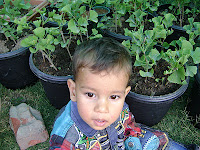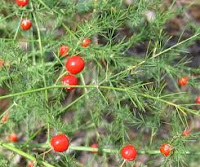Clary has been perceived both as a weaker version of sage (Salvia officinalis) and also as a significant herb in its own right. An antispasmodic and aromatic plant, it is used mainly to treat digestive problems such as wind and indigestion. It is also regarded as a tonic, calming herb that helps relieve period pain and pre-menstrual problems. Owing to its oestrogen-stimulating action, it is most effective when levels of this hormone are low. The whole plant, and especially the leaves, is antispasmodic, appetizer, aromatic, astringent, balsamic, carminative, pectoral and tonic. It is useful in treating disorders of the stomach and kidneys and is a valuable remedy for complaints associated with the menopause, particularly hot flushing. It should not be prescribed for pregnant women. The leaves can be used fresh or dried, for drying they are harvested before the plant comes into flower. The seed forms a thick mucilage when it is soaked for a few minutes in water. This is efficacious in removing small particles of dust from the eyes. The essential oil is used in aromatherapy. Its keyword is "Euphoric".
Propagation of Clary : Seed - can be sown in situ during spring. Alternatively seed can be sown in August/September to overwinter, it will then produce larger plants Thinnings can be transplanted. The seed remains viable for 3 years.
Our seeds are nearly all open-pollinated and so are able to be grown again from seed you save yourself. Open-pollinated seeds are genetically diverse treasures that have been passed on from generation to generation. When you buy and plant open-pollinated seeds you are helping to protect this valuable resource for the future. The Importance of Open Pollinated Seeds Non-Hybrid or Open-Pollinated seeds allow the gardener to collect seeds from a crop for future planting.
For more details about Salvia sclarea cultivation
100 seeds per packet
Other : 500,1000,5000 seed packets are also available
Dry and Live Sage plants are also available
Head, JK Medicinal Plants Introduction Centre
POB: 667 GPO Srinagar SGR JK 190001
Ph: 09858986794
e-mail: jkmpic@gmail.com
For more details: http://jkmpic.blogspot.com
Propagation of Clary : Seed - can be sown in situ during spring. Alternatively seed can be sown in August/September to overwinter, it will then produce larger plants Thinnings can be transplanted. The seed remains viable for 3 years.
Our seeds are nearly all open-pollinated and so are able to be grown again from seed you save yourself. Open-pollinated seeds are genetically diverse treasures that have been passed on from generation to generation. When you buy and plant open-pollinated seeds you are helping to protect this valuable resource for the future. The Importance of Open Pollinated Seeds Non-Hybrid or Open-Pollinated seeds allow the gardener to collect seeds from a crop for future planting.
For more details about Salvia sclarea cultivation
100 seeds per packet
Other : 500,1000,5000 seed packets are also available
Dry and Live Sage plants are also available
Head, JK Medicinal Plants Introduction Centre
POB: 667 GPO Srinagar SGR JK 190001
Ph: 09858986794
e-mail: jkmpic@gmail.com
For more details: http://jkmpic.blogspot.com




